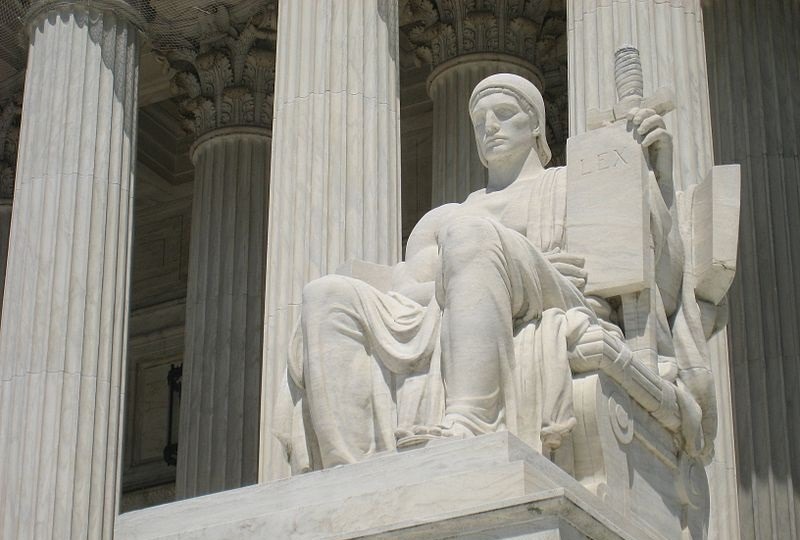 AACA
AACA
June 25, 2015; U.S. News and World Report
Take a big sigh of relief. Our nation’s perpetual crisis over the Affordable Care Act has been stanched by the decision of the U.S. Supreme Court in King v. Burwell that the subsidies provided for people who purchase insurance through the state exchanges are also permissible for insurance purchasers participating in the federal exchange. An alternative decision by the Supreme Court was possible, but it would have been ludicrous. The notion that a state’s choice to punt to the federal exchange could mean that its citizens lose access to subsidies is nonsensical. Imagine that Congress would deny health insurance subsidies to people based on where they live, with no rational legislative purpose for the denial.
Now that the Roberts court has twice stood up for the Affordable Care Act, defending first the individual mandate in 2012 and now the insurance subsidies of roughly $272 a month helping pay the insurance premiums of some 8.7 million people, 6.4 million of whom could have lost their subsidies because they live in states without health exchanges, the question of whether the Affordable Care Act can and should continue has been called, answered, and put to bed. Though some, like Justice Antonin Scalia, might be beside themselves that the Supreme Court under Chief Justice John Roberts has saved President Obama’s signature social legislation (Scalia testily suggested in his dissent that “Obamacare” should be renamed “SCOTUScare”), it is now time for the cottage industry of conservative think tanks and their lawyers filing challenges of all sorts to the ACA to go out of business and to focus on how to improve the health care delivery system rather than concocting schemes to bring national health insurance reform to a halt.
Sign up for our free newsletters
Subscribe to NPQ's newsletters to have our top stories delivered directly to your inbox.
By signing up, you agree to our privacy policy and terms of use, and to receive messages from NPQ and our partners.
So what’s next on the ACA docket?
- If this is basically the end of the major end-all-and-be-all challenges to the ACA, it is a historical moment comparable to the right wing’s opposition to Social Security in the 1930s and Medicare in the 1960s. Slowly, now, you’ll see a change as conservatives turn into reminted defenders of health insurance reform, as though it was their Congressional initiative in 2010 to provide subsidies to the near-poor, to eliminate the pre-existing conditions barrier, and to enhance insurance portability. Just wait and see. In short order, after the last vestige of Ted Cruz-like opposition to the ACA adjusts to reality, Republicans will be defenders of the program—albeit, probably like their attitude toward Social Security, occasionally pitching ideas for increased privatization. Although in response to the SCOTUS decision Senate Majority Leader Mitch McConnell railed about the “multitude of broken promises,” the conservative opposition will now have to cease creating problems that cause broken promises and try to make the system work, else the political blowback hits them at the ballot box.
- King v. Burwell wasn’t a constitutional challenge to the law; the court had already ruled it constitutional in 2012. It was a matter of access to subsidies for the residents of the 36 states whose governors and legislatures had decided not to run state exchanges. But there is a different access question ahead—access not just to insurance coverage, but to healthcare, and particularly for populations that have been historically underserved by healthcare institutions due to poverty, geography, ethnicity, or race. For example, in the wake of the decision, staff members of the Arab Community Center for Economic and Social Services in Dearborn, Michigan were pleased with the SCOTUS decision, because, as Madiha Tariq, the public health manager at ACCESS, put it, “We’re working with an immigrant community that has linguistic and cultural barriers. That increases the effort needed to build trust. [A negative decision by the Supreme Court] would have been like starting over for them.” Moreover, for families that are now receiving health insurance coverage, either through Medicaid or through private insurance purchased on the exchanges, there is now the ability to seek treatment that might have been put off before for a variety of ailments, and surprisingly, as the Oregon Medicaid experiment demonstrated, newly covered individuals might simply continue going to safety-net hospitals rather than individual primary care doctors (and about half of the newly insured will be on Medicaid), so support for healthcare delivery that reaches people in need is a continuing challenge that isn’t simply “solved” by the availability of health insurance. It becomes imperative, in the wake of the decision, to invest in safety-net institutions—nonprofit hospitals and nonprofit clinics—in urban and rural neighborhoods that ought to be assisted to reach people in need.
- There is still a need for access to health insurance itself in the form of expanding Medicaid. Too many states have left the near-poor, those with incomes just above the federal poverty line but too low to qualify for exchange-related subsidies, in a donut hole of distress. States such as Virginia are case studies of the need to expand Medicaid. Governor Terry McAuliffe described the issue succinctly: “This historic decision is a victory for the 286,000 Virginians who will now keep affordable health care that is essential to economic success,” McAuliffe said in a statement. “It is also a clear sign that now is the time to drop cynical efforts to prevent families from accessing care that will make their lives better. With this issue decided, I hope we can now put partisan politics aside and help 400,000 Virginians get access to health care by bringing our taxpayer dollars home to close the coverage gap.” While there are lots of justifications states have drummed up to reject the expansion of Medicaid, the underlying reason is fundamentally that Republican governors and legislature used the denial as one more arrow in the quiver of making the ACA dysfunctional. With the SCOTUS decision made, nonprofits have to redouble their efforts to get states to do the right thing on Medicaid expansion. Over the long run, the investment in expanded Medicaid will pay dividends in improved healthcare treatment available to the nation’s poor and near-poor.
- Reducing the cost of health care in the U.S. remains a challenge. Now that the Court has stabilized the nation around the ACA insurance structure, nonprofits can and should turn their attention to questions of healthcare cost and quality. Writing for the Dallas Morning News, staff writer Jim Landers noted that some hospitals such as Medical City Dallas have operating margins of 30 percent and pharmaceutical manufacturers average 20 percent profits. Americans spent nearly three times as much as Canadians in outpatient care on average, but the results are hardly three times better. To the contrary. Amidst the confusing Republican reactions to the Supreme Court decision, many pledging to repeal the ACA yet again after more than 50 votes that have failed to do that, Senator Pat Roberts of Kansas stumbled into a moment of truth: “I will continue to fight for real reforms to our healthcare system that lower costs, lift the burden on our job creators, and restore the all-important relationship between a doctor and their patient. We don’t need to fix Obamacare, we need to fix healthcare.” Added Kansas Congresswoman Lynn Jenkins, “While the healthcare delivery system had problems prior to the president’s healthcare law, under this fundamentally flawed law it is still not working and remains just as burdensome, confusing, and expensive as the day it came into existence.” Now that the Court has dealt with the subsidy question, it might behoove the likes of Roberts and Jenkins to get past ideological soapboxes and work on fixing the healthcare delivery systems that newly insured Americans should be able to access without the obstacles and costs that current make the system less than functional.
Drew Altman, the president and CEO of the Kaiser Family Foundation, summarized the next challenges in the implementation of the Affordable Care Act following the King v. Burwell decision: “reaching those who are uninsured, a generally more difficult population to connect to insurance; stabilizing premium increases in the marketplaces as insurers get a better handle on their risk pools; and determining which of the Medicare payment and delivery reform projects implemented under the ACA are working and should be scaled up.”
Despite the work still to be done, the tally for the Affordable Care Act leans toward the positive: As of the end of March of 2015, 10.2 million Americans had paid their premiums to activate coverage they purchased through the health insurance marketplace; 16.4 million previously uninsured people have gotten coverage since the enactment of the ACA, due to purchases in the health exchanges, keeping young adults on their parents plans until they turn 26, and through expanded Medicaid; the uninsured rate has declined 9.2 percent for African Americans, 12.3 percent for Latinos, and 7.7 percent for women; and since 2013, 12.3 million people have been enrolled in Medicaid and CHIP. Now the challenge for the government implementers of the ACA and the nonprofit advocates supporting improved healthcare is to generate more positive accomplishments in terms of health insurance coverage and show progress in areas of healthcare delivery, access, cost, and quality. And the challenge for opponents is to cease and desist from purely disruptive and unproductive court challenges like King. If opponents have something useful to suggest about healthcare delivery, then it’s time to bring those constructive ideas to the table.—Rick Cohen













